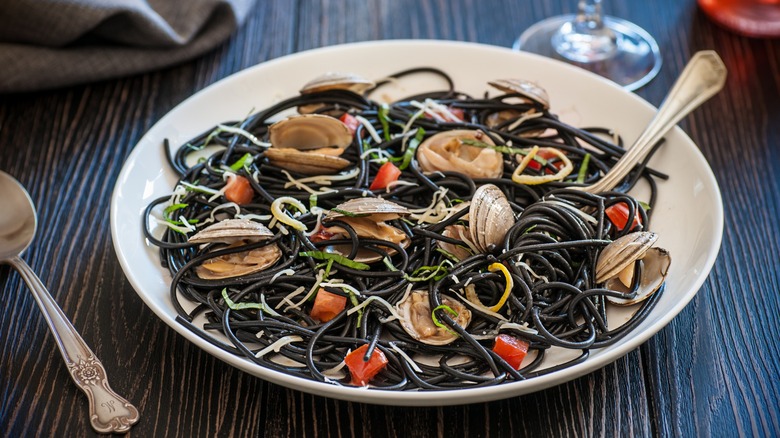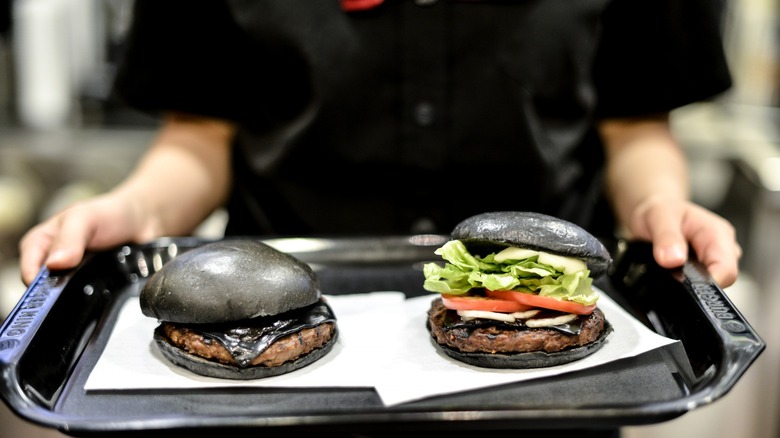What Does Squid Ink Taste Like And How Do You Use It?
Squid ink is a pasta power up, painting spaghetti or linguini with a deep black palette and a subtlely briny taste that exemplifies richness and umami. This isn't news to those who have been lucky enough to enjoy a plate of food flavored with squid ink, but the ingredient may seem daunting to the uninitiated. Rest assured, though, that despite its dark hue, squid ink's flavor can brighten up a plate of shellfish when infused inside pasta, rice, or ramen noodles.
The distinct umami essence of squid ink is due to its high quantity of glutamates while its midnight color is attributed to the prevalence of melanin. Umami is common in many types of seafood, including scallops, shrimp, sardines, anchovies, and bonito flakes, so it makes sense that squid ink is often paired with these ingredients to highlight particularly savory flavor notes. The pigment is also reported to carry health benefits (for example — it may be able to help prevent dental plaque) and has been used throughout history as a medicine alongside a dye for fashion and cosmetic products (per Healthline).
How to eat squid ink
Squid ink has been a part of the Mediterranean diet for ages, and classic Spanish and Italian recipes like arrós negre (or paella negra) and spaghetti al nero di seppia make the black liquid an essential ingredient thanks to its fresh sea flavor. It's a more recent arrival in Japan where the popularization of Italian food in the early 20th century led to a fusion food genre called "itameshi." "Ikasumi," as squid ink is called in Japanese, can now be found in ramen, onigiri (rice balls), and even pizza and hamburgers. In fact, Japanese McDonald's and Burger King offered a black squid-ink burger as part of a Halloween marketing campaign in 2014.
A few drops of squid ink can liven up a broth as in the case of the Okinawan soup specialty "ikasumi jiro." Similarly, adding squid ink to seafood stock when simmering rice or risotto for a paella recipe will turn the entire dish black. When cooking with more doughy foods like pasta and bread, you can add squid ink during the early process and mix it directly with the flour for an earthy punch.


